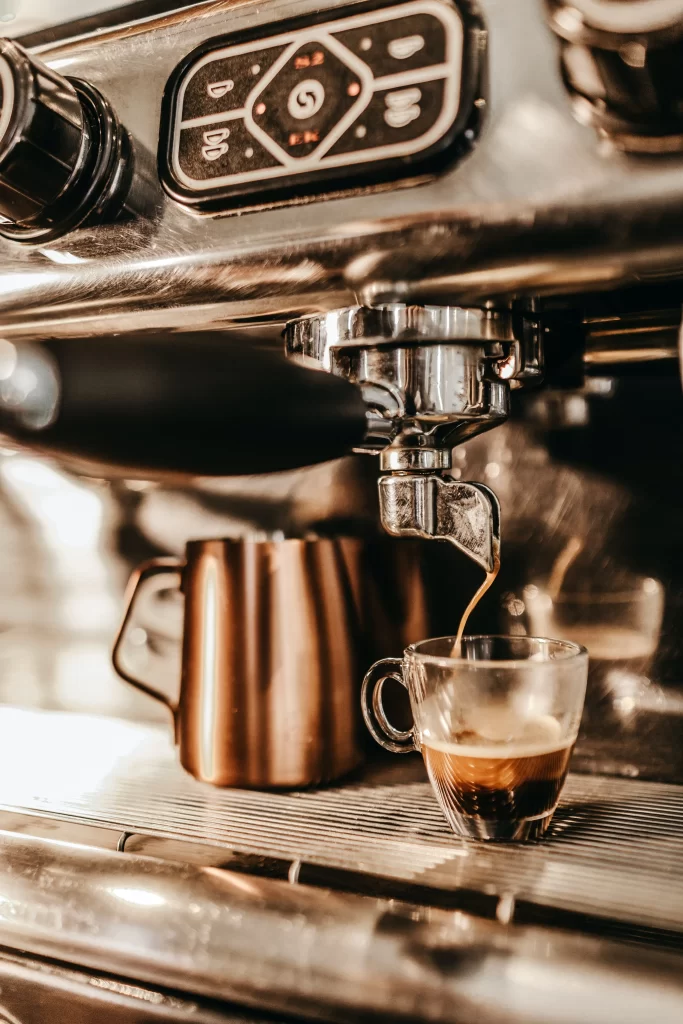Aromatic Coffee Beans

The Science Behind Coffee Aromas
Curious About Aromatic Coffee Beans?
At the heart of coffee’s enchanting aroma are compounds known as volatile organic compounds (VOCs). These are small molecules that evaporate easily, allowing us to experience their scent. During the roasting process, coffee beans undergo a complex series of chemical reactions, including the Maillard reaction and caramelization, which contribute to their distinctive aroma.
Roasting coffee beans triggers the formation of over 800 different aroma compounds. Some of these compounds include aldehydes, esters, and phenols, each contributing to the diverse spectrum of coffee fragrances. The balance and concentration of these compounds vary depending on the bean’s origin, processing method, and roast level, making every coffee experience unique.

Types of Aromatic Coffee Beans
The aroma of coffee is greatly influenced by the type of coffee bean used. The two most common types are Arabica and Robusta, each offering distinct aromatic profiles.
Arabica beans are known for their nuanced and complex flavors. They typically produce a fragrant cup with a wide range of aromas, including floral, fruity, and nutty notes. These beans thrive in higher altitudes and cooler climates, which help develop their sophisticated aroma. For instance, Ethiopian Arabica beans are famous for their jasmine-like floral scent, while Colombian Arabica beans often exhibit a sweet, caramel-like aroma.
Robusta beans, on the other hand, are known for their stronger, more robust flavor. They often produce a heavier, earthier aroma with hints of cocoa and spice. Robusta beans contain higher levels of caffeine and chlorogenic acids, which contribute to their bold, assertive fragrance. These beans are typically grown in lower altitudes and warmer climates, which impart a different aromatic profile compared to Arabica beans.
The Role of Processing Methods
The way coffee beans are processed after harvesting can significantly impact their aroma. Common processing methods include.
1. Washed (or Wet) Processing
In washed processing, the beans are fermented and washed to remove the mucilage before drying. This method tends to produce a cleaner, brighter cup with pronounced acidity and a complex aroma. Beans processed this way often exhibit fruity and floral notes.
2. Natural (or Dry) Processing
Natural processing involves drying the whole coffee cherry with the fruit still attached to the beans. This method imparts a more intense, fruity aroma to the beans, often with hints of berry or wine. The natural process can result in a heavier body and more pronounced sweetness.
3. Honey Processing
Honey processing is a hybrid method where some of the mucilage is left on the beans during drying. This technique creates a balance between the clean flavors of washed coffee and the fruity sweetness of natural coffee, resulting in a rich, aromatic cup with both fruity and sugary notes.

The Impact of Roasting on Aroma
Roasting is where the magic happens. The roast level can dramatically alter the aroma of coffee beans.
1. Light Roast:
Light roasts are characterized by a higher acidity and a more delicate aroma. These beans retain more of their original flavor characteristics and are often described as having floral, citrusy, or fruity notes. The lighter roast preserves the bean’s unique aroma, making it ideal for those who appreciate nuanced and complex fragrances.
2. Medium Roast:
Medium roasts offer a balanced aroma, with a harmonious blend of acidity and sweetness. This roast level often brings out nutty, caramel, or chocolatey notes, making the coffee’s aroma rich and inviting. Medium roasts are popular for their well-rounded flavor and aromatic profile.
3. Dark Roast:
Dark roasts produce a bold, intense aroma with pronounced roasted and smoky notes. The longer roasting time caramelizes the sugars in the beans, resulting in a robust, deep flavor. While dark roasts can sometimes mask the bean’s original aroma, they offer a comforting and powerful fragrance that many coffee lovers enjoy.

Storing Coffee Beans for Maximum Aroma
To preserve the aromatic qualities of coffee beans, proper storage is essential. Coffee beans are sensitive to light, heat, and moisture, all of which can degrade their aroma and flavor over time.
1. Use Airtight Containers:
Store coffee beans in an airtight container to prevent exposure to air, which can lead to oxidation and loss of aroma.
2. Keep Beans in a Cool, Dark Place:
Avoid storing coffee beans in direct sunlight or in warm areas. A cool, dark pantry or cupboard is ideal for maintaining their freshness.
3. Grind Beans Just Before Brewing:
Coffee starts to lose its aroma as soon as it is ground. For the freshest taste and aroma, grind coffee beans just before brewing.
Conclusion
The aroma of coffee is a complex and captivating element that enhances the overall coffee experience. From the science behind aromatic compounds to the influence of bean types, processing methods, and roasting levels, each factor plays a role in shaping the fragrant profile of your coffee. Understanding these nuances allows you to appreciate the artistry behind aromatic coffee beans and enjoy a cup that not only tastes exceptional but also delights your senses with its rich and enticing aroma.
So next time you sip your coffee, take a moment to savor its aromatic notes. Whether it’s the floral bouquet of an Arabica bean or the robust scent of a dark roast, each cup offers a unique journey through the world of coffee aromas.

